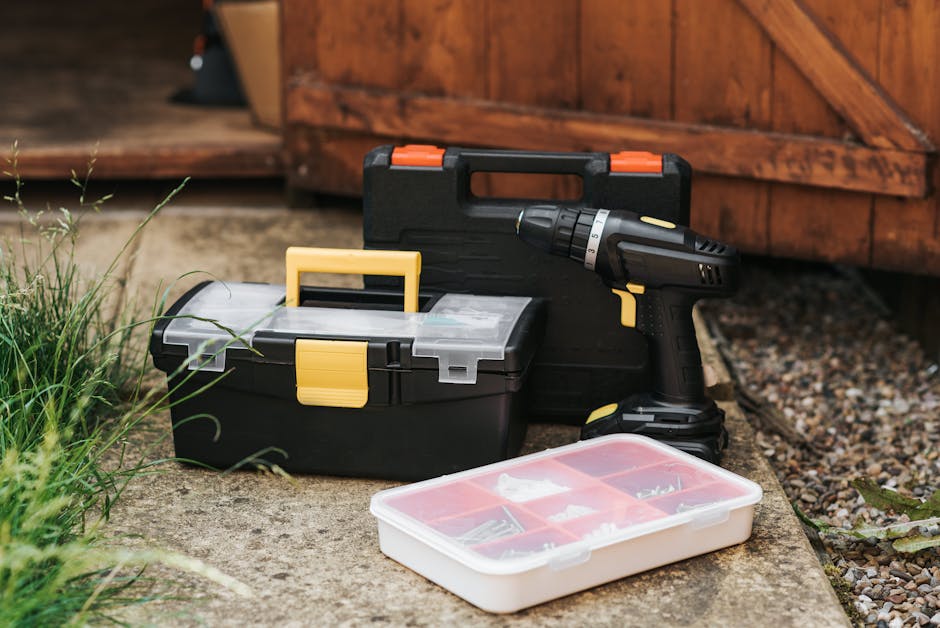Attic Insulation: The Unsung Hero in Extending Your Roof’s Lifespan
The Importance of Attic Insulation for Your Roof
Many folks don’t realize that attic insulation does more than keep your house warm in winter and cool in summer. It plays a huge role in extending the life of your roof. Imagine your roof as the hat on your head on a cold day. Just like how a hat keeps you warm, proper attic insulation keeps your house at the right temperature. But it does even more. It stops heat and moisture from causing havoc in your attic. Without it, during winter, the warmth from your house can reach the roof, melt any snow that’s piled up there. This melting snow then refreezes, creating ice dams which can mess up your roof big time. In summer, without good insulation, your attic becomes an oven, baking your roof shingles and shortening your roof’s lifespan. So, investing in good attic insulation not only saves you money on heating and cooling but also protects your roof, preventing costly repairs or replacements down the line. It’s like hitting two birds with one stone.
Types of Attic Insulation Materials
When it comes to attic insulation, your choices matter. Each type has its own set of pros and cons. Basically, we’re looking at three main players in the game: fiberglass, cellulose, and foam. Fiberglass is like that durable, dependable friend. It’s made of fine glass fibers and is one of the most common types. Why? It’s affordable and easy to install. But be careful; it can irritate your skin and lungs if you’re not geared up properly. Next up, cellulose. Picture this as the eco-friendly buddy. It’s made mostly from recycled paper that’s treated to be fire resistant. It’s good on the wallet and for the planet. However, it can settle over time, meaning it might need a top-up to keep its effectiveness. Finally, we’ve got foam. Foam comes in two forms: spray and rigid foam boards. Imagine this as the high-tech option. Spray foam expands to fill nooks and crannies, making it a champ at blocking air leaks. Rigid foam boards, on the other hand, are great for adding extra layers of insulation without taking up too much space. The downside? Foam tends to be pricier and may require a professional to install. Each type of insulation has its own space in the attic. Choosing the right one can mean a cooler summer, a warmer winter, and less strain on your heating and cooling systems. Think about what your house needs, and you’ll pick the right one.
How Attic Insulation Protects and Extends Roof Lifespan
Attic insulation does more than keep your house warm in the winter and cool in the summer. It’s a shield for your roof, which is like the helmet of your home. When you’ve got good insulation, it stops heat from building up in your attic. Without this barrier, heat can make its way to your roof and start to damage it from the inside out, especially during those scorching summer months. It’s like wearing a black shirt in the sun; it gets hot fast. This heat can make your roofing materials age quicker than they should, leading to cracks and damage. Also, in the winter, if your attic isn’t properly insulated, the warmth from your house can escape to the attic and cause snow on the roof to melt and then refreeze at the edges. This cycle creates ice dams, which are as bad as they sound. These icy build-ups can force water back under your roof tiles, leading to leaks and structural damage. So, by keeping your attic well-insulated, you’re giving your roof a fighting chance against wear and tear, extending its lifespan and saving you money on early repairs or replacements. It’s a simple step that pays off big time for your roof’s health.
Understanding the Role of R-Values in Attic Insulation
When we talk about attic insulation, R-value is a key term you should know. In simple terms, R-value measures how well insulation can resist heat flow. The higher the R-value, the better the insulation’s effectiveness. Different areas of your home, and indeed the country, will require different R-values based on climate conditions. For instance, homes in colder climates need insulation with a higher R-value to keep warmth in. On the flip side, in warmer areas, a lower R-value can be sufficient because the goal is more about keeping heat out. It’s not just about picking the highest R-value you can find. You need to consider your local climate, the type of heating and cooling system you have, and how your house is built. Matching your attic insulation’s R-value to your specific needs can significantly extend your roof’s lifespan by reducing wear and tear from temperature fluctuations. So, when choosing attic insulation, think about the R-value as your personal guard against energy loss. It’s a simple number with a big impact.
The Process of Installing Attic Insulation
Installing attic insulation is straightforward but requires attention to detail. First, you need to choose the right type of insulation. Options include fiberglass, cellulose, and foam. Each has its perks. Fiberglass is common and affordable. Cellulose is eco-friendly. Foam is top-notch for sealing leaks but pricier. Next, prep the attic. Clear it of boxes, dust, and old insulation if needed. Look for signs of pests or leaks. Fix these issues first. Now, for the actual installation. If you’re using batts or rolls, lay them between the joists. Ensure they fit snugly without compressing, as compressing reduces effectiveness. For loose-fill insulation, you’ll need a machine to blow it evenly across the attic floor. Don’t block soffit vents. Covering these stops air circulation, leading to moisture problems. Lastly, consider adding a vapor barrier if you live in a humid climate. This prevents moisture buildup in the insulation. Remember, you might need protective gear, especially with fiberglass. It’s itchy and not something you want on your skin or in your lungs. Hiring professionals is a good idea if you’re not comfortable doing it yourself. They know the drill and can ensure it’s done right.
Signs Your Attic Insulation Needs an Upgrade
Your attic insulation losing its touch? Watch for drafts, skyrocketing energy bills, and rooms that feel too hot or too cold. If it’s summer and your AC can’t keep up, or winter and your heat is escaping, your insulation might be to blame. Ice dams on the roof in winter? That’s a sign. Also, if you spot water damage or moisture in your attic, it’s a red flag. Don’t wait for pests to make a home in there either. Insulation that’s old, thinning, or just not there needs a fast fix. Quick action saves you money on bills and keeps your house comfy.
The Environmental Impact of Proper Attic Insulation
Proper attic insulation doesn’t just keep your home cozy; it’s a big deal for our planet too. Here’s the thing: insulation keeps the desired temperature in your house steady by slowing down the escape of heat or cold. When your attic is properly insulated, your heating and cooling systems don’t have to work overtime. This means using less energy. And using less energy? It’s not just good for your wallet; it’s a win for the environment.
Less energy used means fewer greenhouse gas emissions. These gases are the bad guys behind climate change. So, in a way, properly insulating your attic contributes to fighting global warming. Also, depending on the materials used, some insulation options are more eco-friendly. Fiberglass, for example, often contains recycled materials. However, options like spray foam have chemicals that aren’t so great for the environment. Choosing the right insulation material can boost your green points even further.
In essence, think of proper attic insulation as a double play – you’re keeping your home’s temperature just right while also doing your part in reducing your carbon footprint. It’s a simple step with a big impact.
Cost Implications and Savings from Attic Insulation
Attic insulation isn’t just about keeping your house warm in winter and cool in summer. It’s a smart move that can actually save you money. Yeah, initially, throwing cash at insulation might pinch. The costs can vary, (1.50 to )3.50 per square foot, depending on what insulation type you choose. Fiberglass, cellulose, and foam are the main players, each with its own price tag. But, here’s the kicker: properly insulating your attic can cut your energy bills. We’re talking up to a 30% reduction in energy costs. Over time, those savings add up, big time, easily offsetting the upfront expense. Plus, by reducing the strain on your heating and cooling system, you’re also extending its life and dodging pricey repairs. Not to mention, your roof gets a longer lease on life with less risk of ice dams and water damage. So, while attic insulation might seem like an unsung hero, it’s actually a master saver in disguise.
Common Mistakes to Avoid When Installing Attic Insulation
When tackling attic insulation, many dive in without a clear plan, leading to mistakes that can reduce insulation effectiveness and, in some cases, damage your home. First off, ignoring air leaks is a blunder. Before laying new insulation, seal off any gaps where air can sneak in or out. Next, not choosing the right insulation type spells trouble. Options like fiberglass, cellulose, and foam have their pros and cons; pick one that suits your climate and home. Another common error is skimping on the insulation amount. More insulation equals better energy savings, so don’t cut corners. Also, watch out for covering soffit vents. These vents keep air flowing in your attic, and blocking them can lead to moisture problems and reduced roof lifespan. Lastly, forgetting to wear protective gear can turn your DIY project into a health hazard. Insulation materials can irritate your skin, eyes, and lungs, so gear up. Avoid these pitfalls to ensure your attic insulation effectively extends your roof’s life without causing unwelcome issues.
Conclusion: Why Attic Insulation is a Key Investment for Homeowners
Attic insulation does more than just keep your home warm in the winter and cool in the summer. It’s a key player in extending the life of your roof, making it an investment that pays off in the long run. By maintaining stable temperatures, attic insulation helps prevent the wear and tear caused by extreme weather conditions. This means less risk of damage from ice dams in winter and less heat damage to your roofing materials during hot summers. Investing in good attic insulation saves you money not only on your energy bills but also in potentially costly roof repairs down the line. It’s a smart move for any homeowner looking to protect their property and save money in the long haul. So, when you think about home improvements, don’t overlook the power of proper attic insulation. It might not be the most visible upgrade, but its benefits are undeniable.








